
Where’s the largest collection of wildflowers on Earth? Step forward, W.A.
It might seem an unlikely answer, but Western Australia boasts an astonishing 12,000+ species, more than 60% of which are found nowhere else on the planet. It’s an unbelievable statistic and warrants WA’s inclusion on any list of the greatest floral displays – along with tulips in the Netherlands, lavender in Provence and cherry blossoms, wisteria and shibasakura in Japan.
The best season for viewing WA’s colourful wildflowers starts right about now, when the flowers start to bloom in the north of the state. The season then sweeps downwards, finishing on the south coast in November.
Here are some of the best places to witness the botanical spectacular:
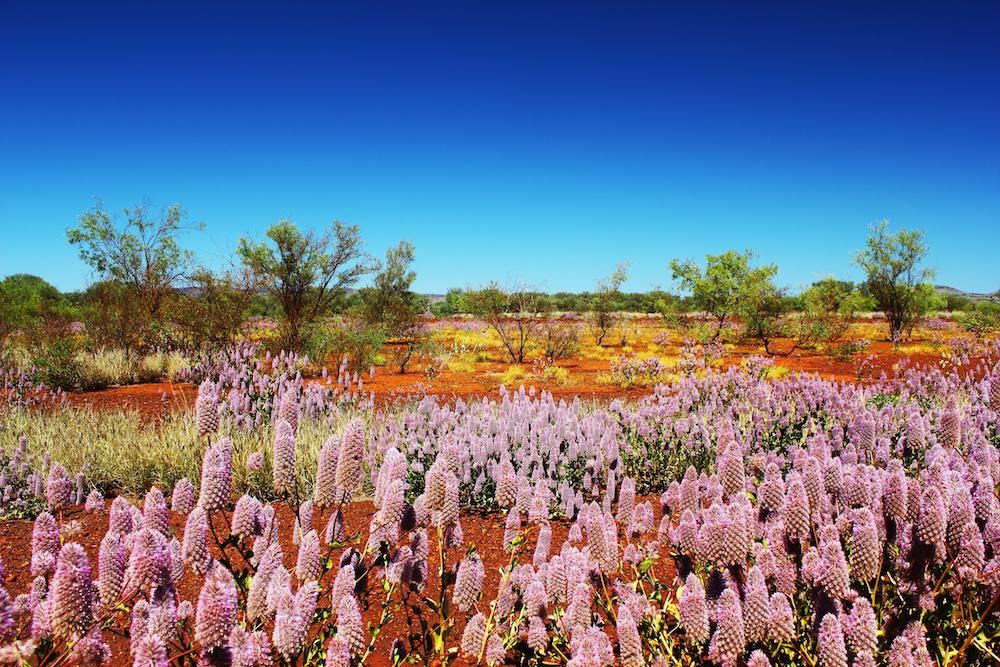
What: Western Australia’s remote Pilbara is 400,000 sq. km of dramatic gorges, dunes and endless spinifex plains. In this two-billion-year-old landscape, wildflowers burst from the red earth and add a new swathe of vibrant colours to the outback palette.
Best time for wildflowers: June and August (but there’s usually something to see between March and October)
Top spots for seeing them: Karijini National Park (formerly Hamersley Range, the second-largest national park in WA) and Millstream Chichester National Park
What you might see: Mulla mulla, Sturt’s desert peas, sticky cassia, bluebells and native roses, hibiscus and fuschia. Further south, en route to Onslow, also grevilleas, apple bush, green birdflower, parakeelya and more.
What else: Time it right, and could you also get to see the “Staircase to the Moon” – a beautiful optical illusion created when the full moon rises over exposed mudflats at extremely low tide. There’s only a handful of spots on Earth where you can witness this natural phenomenon, including Roebuck Bay in Broome, Sunrise Beach, Onslow, Dampier, Cossack, Point Samson, Hearson’s Cove and Port Hedland, all in Western Australia.
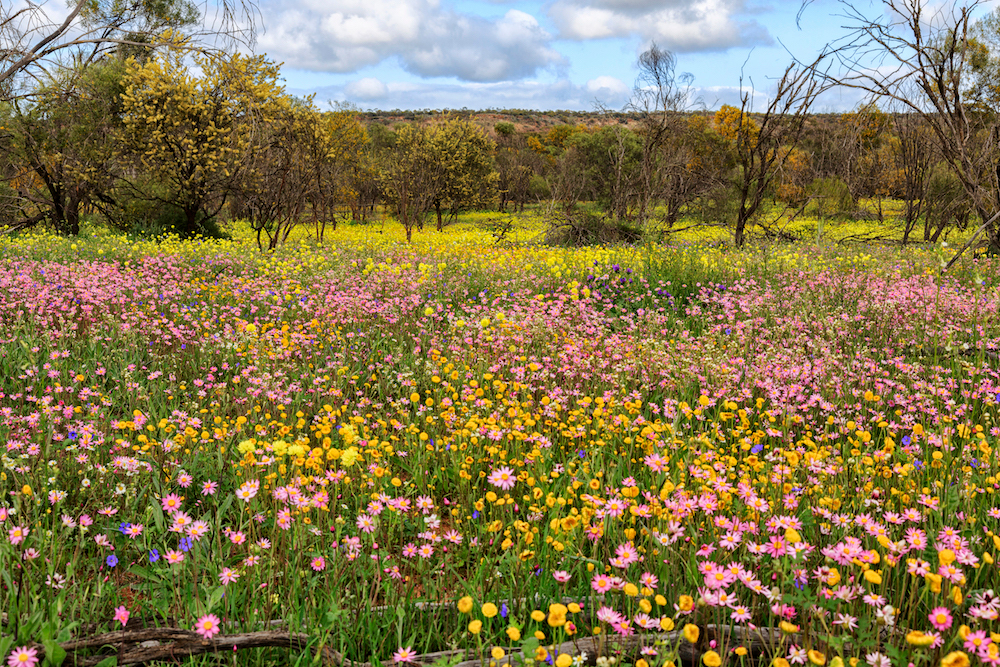
What: The Coral Coast, which extends from the Jurien Bay/Cervantes regions just north of Perth up to Exmouth, is home to extraordinary landscapes (outback gorges, desert, rivers and the Pinnacles – unique limestone formations, to name but a few), plus more than 1,100 kilometres of white beaches and unrivalled marine encounters in the waters off them. It’s an area that abounds with Australian wildlife… and wildflowers. Millions of them blanket inland areas, creating flower fields that explode with colour.
Best time for wildflowers: Between July and October (but wildflowers bloom on Australia’s Coral Coast all year round).
Top spots for seeing them: Cape Range National Park; the Kalbarri coastal region; around Geraldton; and Coalseam Conservation Park, probably the best place to see breathtaking wildflower carpets.
What you might see: Mulla mullas, Sturt’s Desert Pea, banksias, spider orchids, wreath flowers, coastal morrisons, feather flowers, Geraldton wax, smoke bush, black kangaroo paw and more.
What else: Swim with whale sharks and snorkel at the world’s largest fringing coral reef, the World Heritage-listed Ningaloo.
Read more: The most beautiful places around the world to stroll amongst the flowers
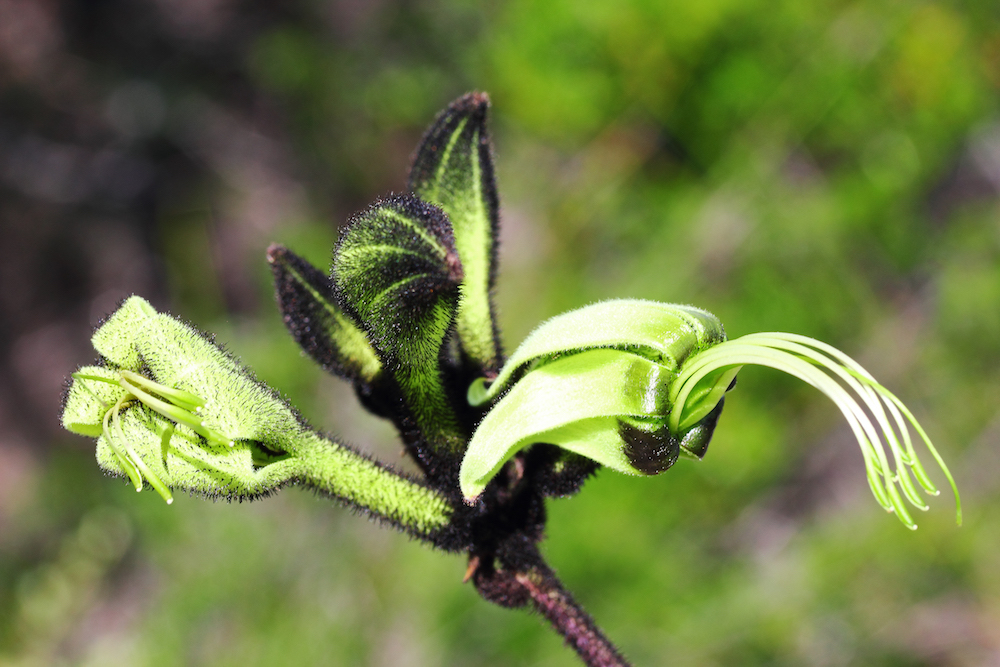
What: You might not expect to see many wildflowers in an urban area, but you’ll be happy to be proven wrong in the W.A capital. In prime real estate overlooking the Swan River, Kings Park displays some of the very best of Western Australia’s wildflowers for anyone who can’t make it further afield. During the season, some 1,7000+ native species of wildflowers and 3,000+ varieties of flora unique to WA are in bloom.
Best time for wildflowers: Celebrating the start of spring and the park’s hundreds of varieties of wildflowers, the Kings Park Festival takes place during the entire month of September.
What you might see: Flowering eucalyptus trees, everlasting sunflowers, blue leschenaultia, Eucalyptus Kruseana, black kangaroo paw and more.
What else: See more wildflowers (and drink some seriously good wine) in the Swan Valley, about a 30-minute drive north of Perth. The Wununga Trail in Whiteman Park.
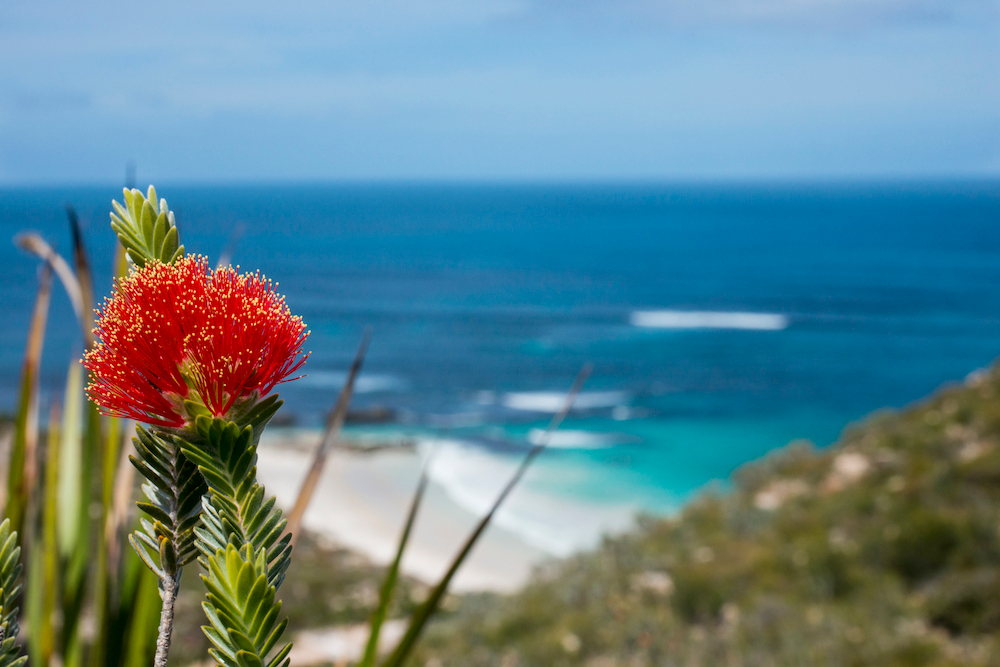
What: From the Rainbow Coast (encompassing Walpole, Denmark and Albany) to the Fitzgerald Coast in the Goldfields-Esperance region, the southern parts of Western Australia are some of the most isolated and beautiful parts of the world. From August stretching right through to the summer months wildflowers can be seen throughout the region, as diverse and dramatic as the landscape.
Best time for wildflowers: Between August and November.
Top spots for seeing them: The Walpole Wilderness Area; Porongurup National Park; Stirling Range National Park; Fitzgerald River National Park, one of the most botanically significant parks in Australia and home to more than 1,800 species of wildflowers – almost 20% of Western Australia’s total. There’s also the Esperance Anglican Wildflower Festival and the Ravensthorpe Wildflower Show & Spring Festival in September.
What you might see: Southern Cross, sticky tail flower, pixie mops, coral vine, Eutaxia myrtifolia, swamp bottlebrush, wedge-leaved dryandra, kangaroo paws, orchids, wattles, buttercups, native bluebells and more.
What else: Step out onto the Valley of the Giants Tree Top Walk near Denmark – the view from up in the ancient giant tingle forests (about 40 metres up) is breathtaking.
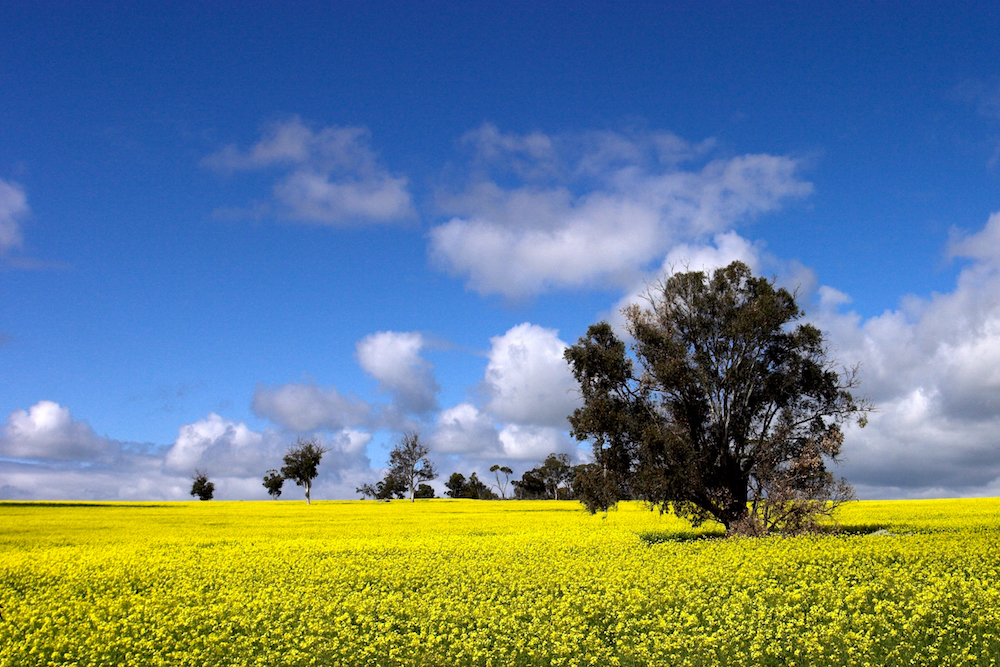
Note: Don’t pick the flowers! You can be fined $2,000 for picking wildflowers in WA, so take nothing but photos.